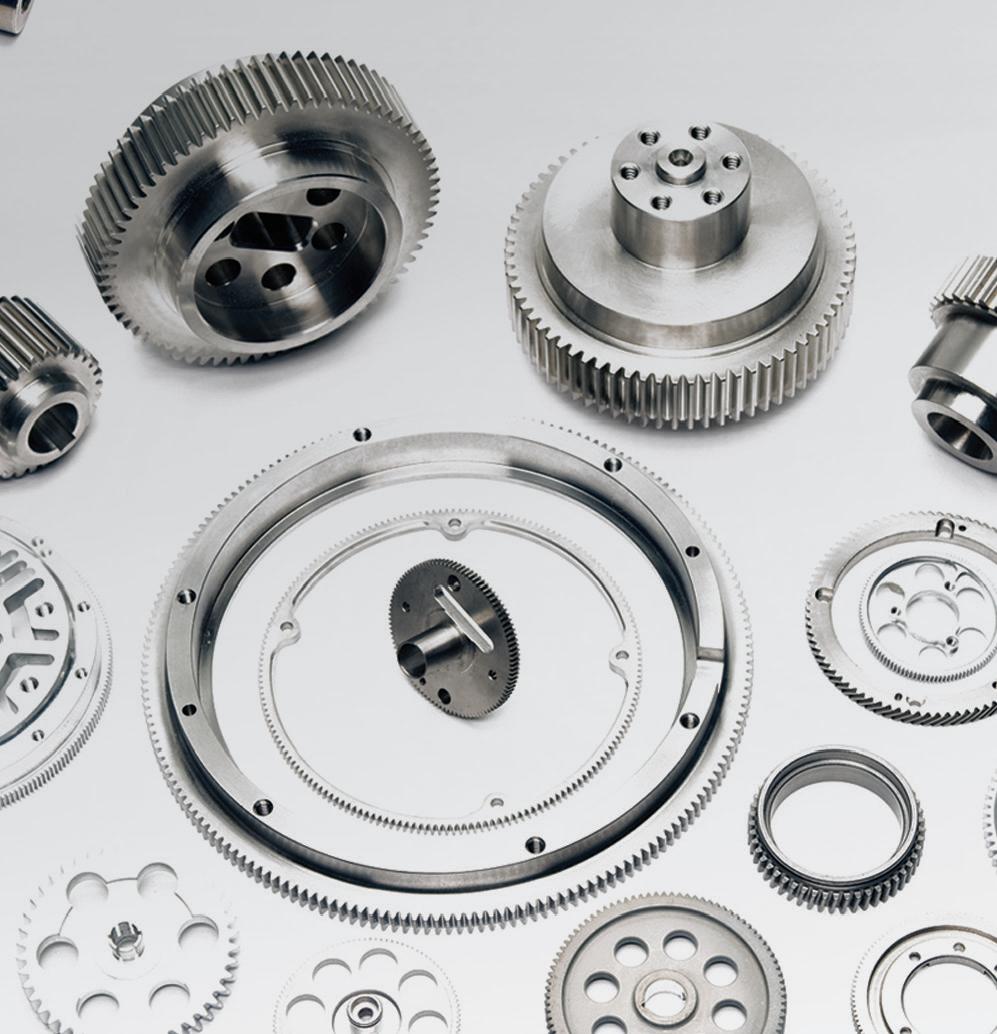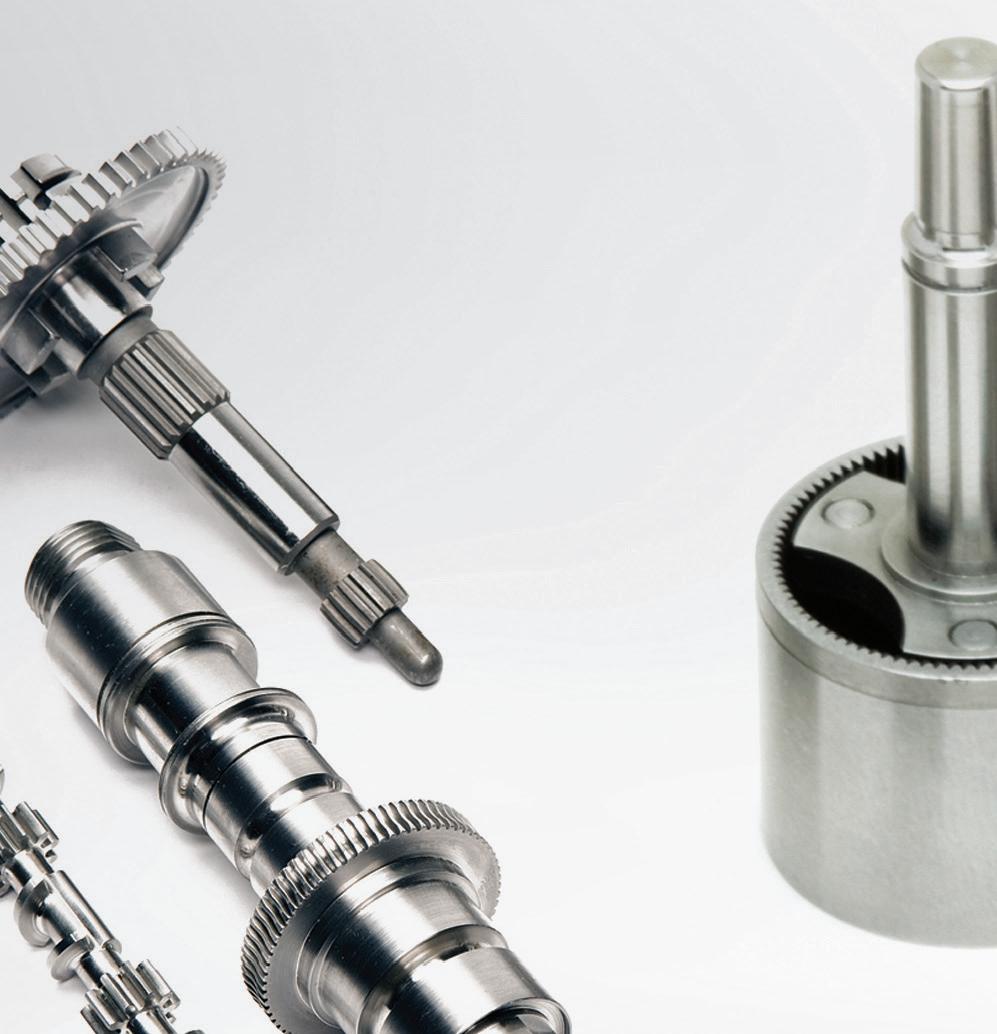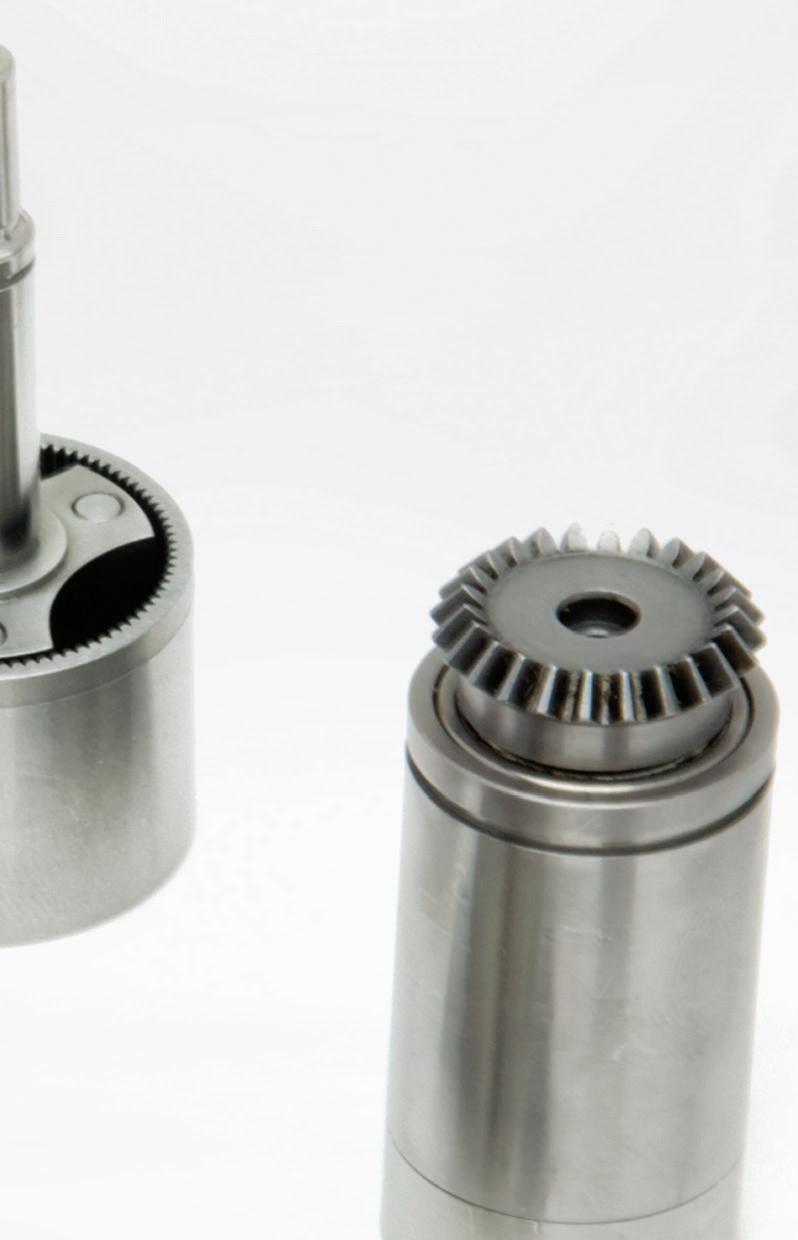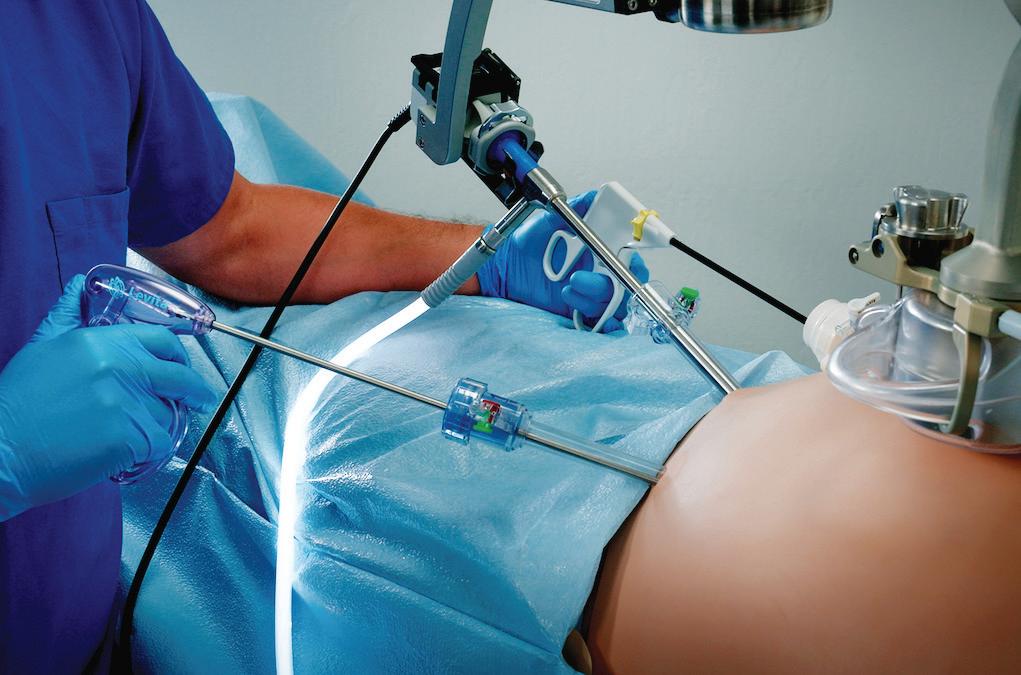
The Senhance system is designed to work with 5- and 3-mm instruments.
Asensus Robotics

By Brianna Wessling • The Robot Report


The Senhance system is designed to work with 5- and 3-mm instruments.
Asensus Robotics

By Brianna Wessling • The Robot Report
Reven Alt, a 16-year-old from Aurora, Colo., last year became the first patient to be operated on by a remotely controlled Senhance robot at HCA HealthONE Rocky Mountain Children’s. After the removal of his gallbladder with the Asensus Surgical system, Rev was discharged that afternoon. Just two days later, the teenager was out of the hospital and dancing at his prom.
In the past, common procedures such as gallbladder removal could mean a night or more in the hospital, and weeks of painful recovery.
Now, systems like the one from Asensus Surgical promise to make them
faster, less invasive, and safer. In addition, the company is bringing this technology to pediatrics, a notoriously tricky area for surgeons.
Dr. Steve Rothenberg, the surgeon who performed the procedure, said his patients can weigh anywhere from less than 1 lb. to over 250 lbs.
“There’s a huge range of patients that I have to deal with,” he told The Robot Report. “I specialize specifically in minimally invasive surgery in small infants and children. I have spent most of my career trying to develop instrumentation to work in that space.”
The procedure at HCA HealthONE Rocky Mountain Children’s included
access to Senhance’s smaller reusable 3 and 5 mm instruments, which are designed to safely and efficiently meet the needs of pediatric patients’ small anatomy.
The company also equipped the robot with a 5 mm camera scope, haptic feedback, and advanced clinical intelligence, allowing the surgeon to perform the procedure in a control center mere feet away from the operating table.
Asensus targets pediatric surgeries [The Senhance system] is a soft-tissue, abdominal, multi-port surgical system,” explained Anthony Fernando, president and CEO of Asensus. “It sets itself apart in







CGI Motion standard products are designed with customization in mind. Our team of experts will work with you on selecting the optimal base product and craft a unique solution to help di erentiate your product or application. So when you think customization, think standard CGI assemblies.
Connect with us today to explore what CGI Motion can do for you.






a few areas. One around haptic feedback and the use of 3-mm instruments. It’s probably the only system on the market today with those small instruments. Another differentiator is the use of realtime, augmented intelligence.
Rothenberg has over 20 years of experience working with surgical robots. In that time, he said he struggled to find a system that could meet the unique demands of pediatrics. That is, until he learned about the Senhance system.
“I was intrigued by the fact that they could use smaller instrumentation,” Rothenberg said. “I liked that it was an open platform, meaning that not only can the surgeon sit and look at the console that he’s operating, but he can also see the patient.”
In contrast, other surgical robots put surgeons at a hooded console where they’re not able to directly see the patient. Rothenberg also noted that Senhance is easier to maneuver around if something doesn’t go according to plan during surgery.
“As opposed to having this giant, sort of octopus that comes over and makes it difficult to access our smaller patients, these robotic arms come in separately,” he said. “So, it’s very easy to get at the patient while the robot is engaged.”
Rothenberg said that he is starting with teenagers and other larger patients and performing relatively simple procedures. As the physician gets more familiar with the robot, he plans to operate on smaller patients with more complex surgeries.
“It’s exciting to have a company that’s focused on pediatric surgery that has listened to what we feel our issues and needs are, and is willing to work towards those,” Rothenberg said.
Tackling the learning curve of surgical robots
Asensus Surgical said that Senhance comes with a range of tools that surgeons can use while they’re operating. For example, the system can track where the surgeon is looking and direct the camera to those areas.
“Normally when I do standard laparoscopic surgery, I have to have an assistant who runs the laparoscopic camera for me,” said Rothenberg.

“Even in other robotic systems, where the camera is hooked up to a robotic arm, you need to clutch and unclutch to take over that camera and move it around. With this system, I’m actually able to do it with my eyes, so I can maintain my hands on my two instruments,” he said.
“I look where I want the telescope to look, and it goes right there,” Rothenberg added. “It’s quite an amazing thing. I can make fine adjustments while I’m operating.”
Such features could give surgeons more control. Previously, physicians had to move their hands between instruments and camera controls, but now, they can do up to three things simultaneously. Asensus acknowledged that this creates a learning curve for physicians.
“The learning curve is how do we use all the additional features in the best and most efficient way,” Fernando said. “That takes some practice.”
“The learning curve is learning how to position the robot, how to get the arms just right where it works for that procedure. Some things we change because of the different ways the robot looks at things,” Rothenberg said. “Sometimes we use angled scopes in the robot, but we’re tending to use more straight scopes.”
Asensus plans for a secondgeneration system Fernando told The Robot Report that the Senhance is a first-generation system. “The intent of the first generation product was to really get feedback from the market and to understand where the needs are and what the opportunities are,” he said.
Senhance allows surgeons to work closer to their patients than other surgical robots.
Asensus didn’t want the system to just be a “research exercise,” asserted Fernando. Instead, the company wanted to work with surgeons in real clinical settings. It started targeting pediatrics based on the responses it gained from surgeons in the field, and the company has found a niche there.
“This is a few years out, but all of these experiences and feedback have gone into creating the secondgeneration platform,” Fernando said. “This is yet another step above what we currently have, especially innovating on instrumentation.”
Asensus is continuing to get feedback from physicians as it develops its nextgeneration system. Fernando said the company has data on more than 90% of the 15,000 cases Senhance has participated in so far.
“I love it when a company talks to you when they’re in the process of designing things, as opposed to designing something and then bringing it to you after the fact and then trying to make modifications. It’s so much better,” Rothenberg said.
Moving forward, Rothenberg said he hopes that systems like Asensus can act similarly to an ADAS in a car by preventing the surgeon from making mistakes.
“Surgeons today are not getting as much broad experience as I did during my training, for a lot of reasons. So, hopefully, we’re able to put a bigger brain in the robot to help them do cases and increase their experience level,” Rothenberg said. RR
By Brianna Wessling • The Robot Report

Surgical robotic procedures are becoming increasingly more commonplace every day. In 2022 alone, surgeons around the world performed 1.8 million robot-assisted procedures, according to the Royal College of Surgeons of England. In December 2024, Levita Magnetics Inc. announced what it said was a new breakthrough in the field: For the first time, surgeons completed a procedure using two robots in tandem.
The procedure, a prostate-removal surgery, used Levita’s MARS platform to maneuver internal organs using its proprietary magnetic positioning system.
Dr. Jeffrey Cadeddu at the University of Texas Southwestern Medical Center
combined the MARS (magnetic-assisted robotic surgery) system with Intuitive Surgical‘s Da Vinci SP (single-port) robot.
Dr. Alberto Rodriguez-Navarro, the CEO and president of Levita Magnetics, said the idea for the procedure came from Cadeddu. It was an exciting moment for Rodriguez-Navarro, who founded Levita after stopping his clinical practice. He recalled that he hoped to create tools that would empower surgeons to improve patient outcomes.
So, seeing surgeons take this system and innovate new ways to perform procedures felt a little unreal, he said.
“That’s the beauty of working with world-renowned surgeons. They have ideas,” Rodriguez-Navarro told The Robot
Report. “You provide the tools, and they found a way of incorporating different technologies.”
Silicon Valley-based Levita Magnetics secured FDA 510(k) clearance for its updated MARS system in 2023. The company‘s system includes two surgeoncontrolled robotic arms. One arm holds and operates the magnetic controller, while the other holds and controls an endoscope with a camera for visualization inside the patient.
Inside the landmark procedure
“We were the first in the world to develop the magnetic concept; that’s our strength,” asserted RodriguezNavarro. “But, of course, we’re open
to collaboration, and that’s what we’re demonstrating here. In the end, our goal has to be how we improve outcomes for the patient.”
During the prostate removal procedure, the surgical team used Levita’s MARS platform to retract tissue within the patient precisely. This increases visualization, allowing the team to preserve nerves involved in sexual function and urinary continence.
The neurovascular bundles responsible for erectile function and urinary continence are located adjacent to the prostate gland. Historically, surgeons have struggled to avoid these bundles during prostate removal.
“Our goal is to improve visualization,” Rodriguez-Navarro said. “If you see better, you can do a better procedure, because you do better dissections.”
The Da Vinci SP provided the singleport capabilities required for this complex urological surgery. The Intuitive Surgical
“Our goal is to improve visualization. If you see better, you can do a better procedure, because you do better dissections.”
Dr. Alberto Rodriguez-Navarro • Levita Magnetics
robot makes an incision so that surgeons can get inside the patient and perform a procedure. The MARS system allows the surgeons greater access and visualization once they’re inside the body, removing the limits that come with single-port surgery.
“We provide our capability of generating movements that you are not able to do with conventional instruments or conventional robotics, because
we generate movement through the abdominal wall,” noted RodriguezNavarro. “So what that means is the movements that you can generate are not constrained by your entry point.”
Surgeons leverage Levita’s technolgy
Typically, the MARS system is used for common procedures that are performed every day in high numbers,

The MARS system uses magnets for easier control of minimally invasive procedures.
Levita Magnetics


such as gallbladder, bariatric, and colorectal procedures. With this dualrobot procedure, Levita said it has demonstrated that MARS can be a tool for more complex procedures and improve outcomes for patients.
“Magnetics enables you, as a surgeon, to provide a procedure with fewer incisions, because you generate movement using magnets through the abdominal wall, so you don’t have to make so many holes in the patients,” Rodriguez-Navarro said.
In addition to its less-invasive technique, the MARS system is also less expensive for hospitals, he added.
“Our robot dimension is much leaner; it doesn’t use a huge console,” said Rodriguez-Navarro. “We focus on how we can do the procedure better, and that aspect for us is reducing the number of incisions.”
With a much leaner robot, the surgical system is more accessible on a global scale, he said.
Levita Magnetics makes plans, considers collaborations Rodriguez-Navarro said Levita is “absolutely” interested in more dualrobot surgeries.
“It’s very rewarding, knowing that you’re providing a better surgery for a patient, that a patient will have a better outcome with this, and they will go home earlier with less incision,” he said.
Levita Magnetics is also developing artificial intelligence that could aid in future procedures.
“We have a very strong pipeline of AI that we are actually developing,” said Rodriguez-Navarro. “I’m totally convinced surgery will be an autonomous procedure. In the future,
At CGI we serve a wide array of industries including medical, robotics, aerospace, defense, semiconductor, industrial automation, motion control, and many others. Our core business is manufacturing precision motion control solutions.
CGI’s diverse customer base and wide range of applications have earned us a reputation for quality, reliability, and flexibility. One of the distinct competitive advantages we are able to provide our customers is an engineering team that is knowledgeable and easy to work with. CGI is certified to ISO9001 and ISO13485 quality management systems. In addition, we are FDA and AS9100 compliant. Our unique quality control environment is weaved into the fabric of our manufacturing facility. We work daily with customers who demand both precision and rapid turnarounds.
step by step, you will start automating steps of the procedure.”
Generally, Levita’s goals are to reach more patients, create better outcomes, and perform surgeries faster in the next year.
“Robotics are very cool, but we don’t have to develop robots just because it’s cool. It really has to bring value to the patient and to the healthcare system,” Rodriguez-Navarro said. RR
